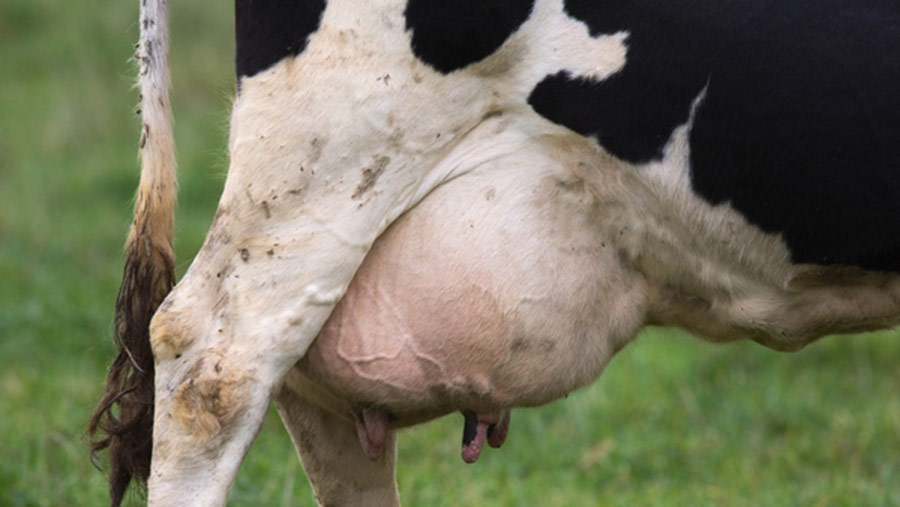Mastitis biomarkers in milk opens door to on-farm test
 ©Tim Scrivener
©Tim Scrivener Researchers have identified potential mastitis biomarkers in milk samples – opening the door for the development of an on-farm diagnostic test.
Using a new analytical method to measure levels of proteins (proteomics), peptides (peptidomics) and small chemicals (metabolomics), scientists from the University of Glasgow and the Moredun Research Institute examined changes that occur in milk during mastitis infection.
Six cows were infected through the teat with Streptococcus uberis, one of the main causes of mastitis in dairy cows.
Within a single sample of milk, researchers were able to measure 570 different proteins and 690 metabolomics.
Among these, potential biomarkers of mastitis were identified.
See also: Pour-on anti-inflammatory approved to treat mastitis fever
Analysis showed a large increase in proteins, such as cathelicidin, an antimicrobial peptide, and haptoglobin in milk during infection.
Bile acid, which is normally found in the intestine where it aids digestion, was also unexpectedly found in milk during mastitis infection.
Offering an explanation, Professor Ruth Zadoks from the Moredun Research Institute told Farmers Weekly: “Bile has antibacterial properties.”
“When we looked at the milk before bacteria was introduced, there was no bile in milk.
Diagnostic test
Prof Zadoks says several highlighted compounds are now being investigated as the basis of a potential diagnostic test that could be used on farm.
“We saw patterns in all areas we looked at,” she says. “What was interesting was that the response was tightly orchestrated, which is an important result because it means we could develop a diagnostic test.”
“Of course they would have to perform better than existing tests, which means they would have to be quick, cheap and effective.”
Given that five of the six cows infected fought mastitis without the help of antibiotics, she says such a test could be best used before dry-off “to see which cows need antibiotics and which are likely to be fine without.”
“That wouldn’t only contribute to cow welfare, but reduce use of antimicrobials,” she adds.
